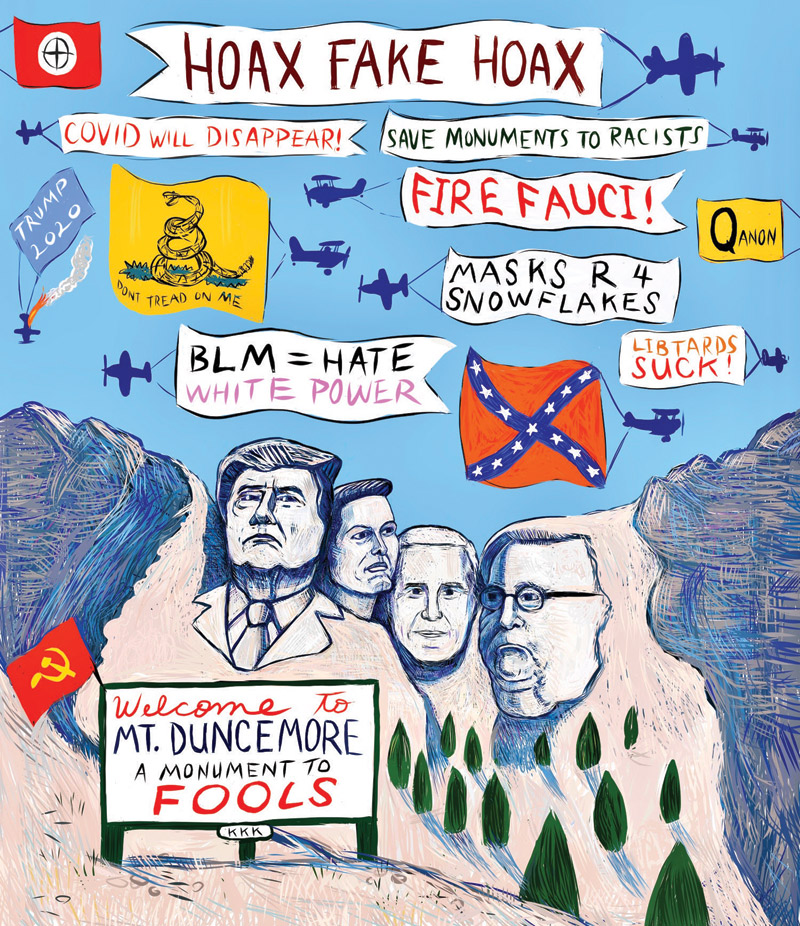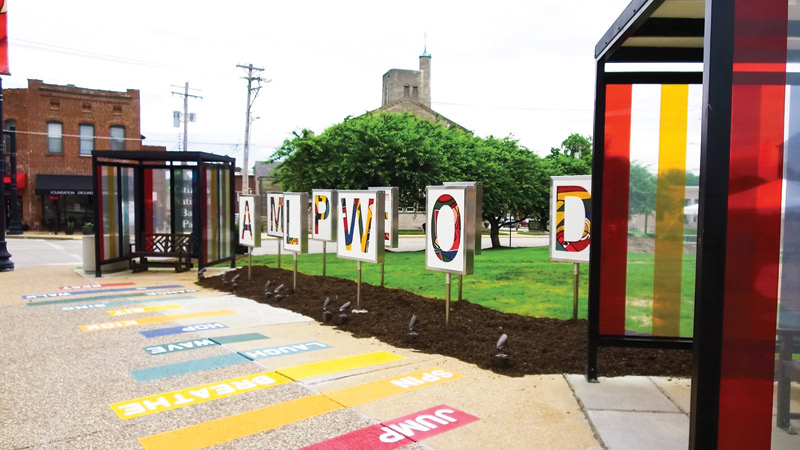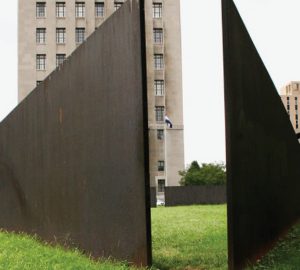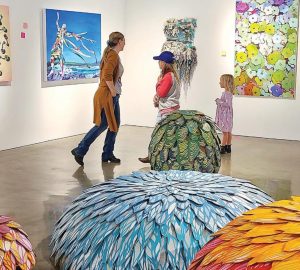maplewood
This ain’t your daddy’s bus stop. This one’s for kids … well, in large part. The recent installation at the MetroBus stop in Maplewood features two colorful shelters with artful benches tucked out of the elements. Adjacent to the Citizens National Bank parklet at the southwest corner of Manchester Road and Marshall Avenue, the color scheme is bright and cheery. Between the shelters is “Maplewood” rendered in individual letters on posts. On the reverse side of each letter panel is artwork featuring iconography from in and around Maplewood and throughout the metro, from the Gateway Arch to Route 66. (Although many drivers don’t get their kicks anywhere on Manchester nowadays, it was Route 66 through here.) A dozen multicolored rectangles painted along the sidewalk—reading “HOP,” “WAVE,” “SIT,” “SING,” “SPIN,” “LAUGH”—comprise an interactive play element: a hopscotch game. The graphics were created by Maplewood’s own award-winning painter and mixed media artist Genevieve Esson. Citizens for Modern Transit and AARP completed the so-called Transit Stop Transformation Project in partnership with the City of Maplewood, Citizens National Bank and KABOOM!, a national nonprofit that partners with communities to expand play opportunities for kids. More room for waiting, and access to surrounding green space, are a plus. The overall concept was led by BlackArc Design with input from residents. The project raises awareness about placemaking around transit by enhancing the places people simply pass through en route to a destination. So why so glum, chum? Here, the journey itself becomes an enjoyable part of the experience!
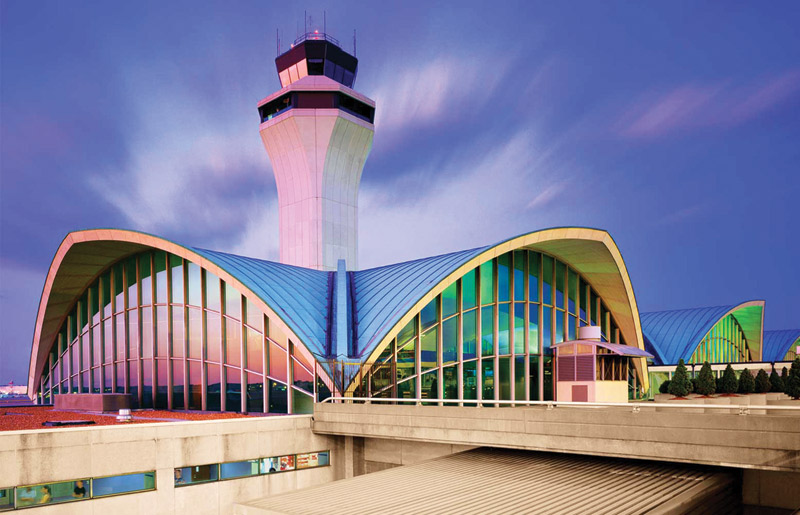
bridgeton
What’s on your baggage tags every time you fly in or out of St. Louis Lambert International Airport? Why “STL,” of course. That’s kind of hip, but the airport has always been hip, what with its striking, iconic 1956 arched terminal designed by Minoru Yamasaki. With such futuristic architecture, one might not think our airport has been around all that long, but it just celebrated its centennial. On June 18, 1920, an airfield emerged from farmland in the county when Albert Bond Lambert and the Missouri Aeronautical Society leased 170 acres. Major Lambert paid the rent and had the site cleared, graded and drained, built a hangar at his own expense, then offered free use of the field to anyone wishing to use it. (You may remember from U.S. history class that there was this airmail pilot who flew in and out of there, name of Charles Lindbergh. In 1927, he flew solo from New York City across the Atlantic to Paris. It was kind of a big deal.) The city of St. Louis bought the property in 1928. Fast forward: Its modular design provided for expansion, and in 1959, Lambert became one of the first U.S. airports with jet airline service. It annually has served more than 16 million passengers. The airport recently marked its 100th birthday by unveiling a rendering of a glass artwork honoring Major Lambert by artist Martin Donlin. The piece, set for completion in the fall, will work on several levels: bold images for impact, intricate details that demand closer inspection. It will enhance the airport’s many other permanent and temporary art installations. This is all very nice, of course, but what about this brouhaha about privatization? Well, maybe we’ll get to that in a later issue. But will it affect the quality of your personal experience on the ground or in the air? Will it decrease delays? Um … who knows?
the metro
In these days of seismic cultural shift, it may be time for a few personal disclosures: My great-grandfather was named Christopher Columbus Coats! Honestly. Then, my beloved grandfather was Columbus Stanton Coats, but my grandmother Irene, “Gaga Rene,” just called him Stanton. Well, that covers my family’s association with the murderous man who has been lauded for centuries as the discoverer of America. What’s in a name, though, right? Plenty. They should rename the holiday something like Indigenous Peoples’ Day. But wait, there are more skeletons in my ancestry: Stan wrote a family history, whereupon I learned that a distant relative was none other than Confederate Gen. William Hardee. Maybe this is mitigated by the fact that he wrote a popular infantry manual that was used by both the South and the North during the Civil War? Criminy, he was a blood relative—but that’s a mere accident of birth, right? O.K., that’s not all. I hereby admit that I was a member of the Kappa Alpha Order in the 1970s at Oglethorpe University in Atlanta. Their spring formal is called “Old South.” I just found a professional portrait, me dressed in a Confederate infantryman’s uniform and my date in a hoop skirt straight out of Gone with the Wind. I could blame this on my excessive consumption of Pabst Blue Ribbon beer and listening to records by the late Charlie Daniels, such as The South’s Gonna Do It (Again). Yes, I was young and clueless, and the fraternity was the only one of three that gave me a bid. Still, that was a personal decision, as a then-resident of Georgia, to associate myself with the Lost Cause. This leaves me feeling uneasy as an elderly adult, and not just a little confused. Should they have taken down the Columbus statue in Tower Grove Park? I think so. But, what about all the statues of Robert E. Lee and other Confederate generals such as Stonewall Jackson? By all means. First of all, most of them were erected in the early 20th century, during the days of Jim Crow, when lynchings were common, although the Confederacy had lost a war over slavery a half-century before that. Now it’s 155 years hence! It’s up to each of us to effect change and condemn racism—whether on Portland Place or in Forest Park, NYC’s Central Park or D.C.’s Lafayette Square … in your neighborhood or across my street.
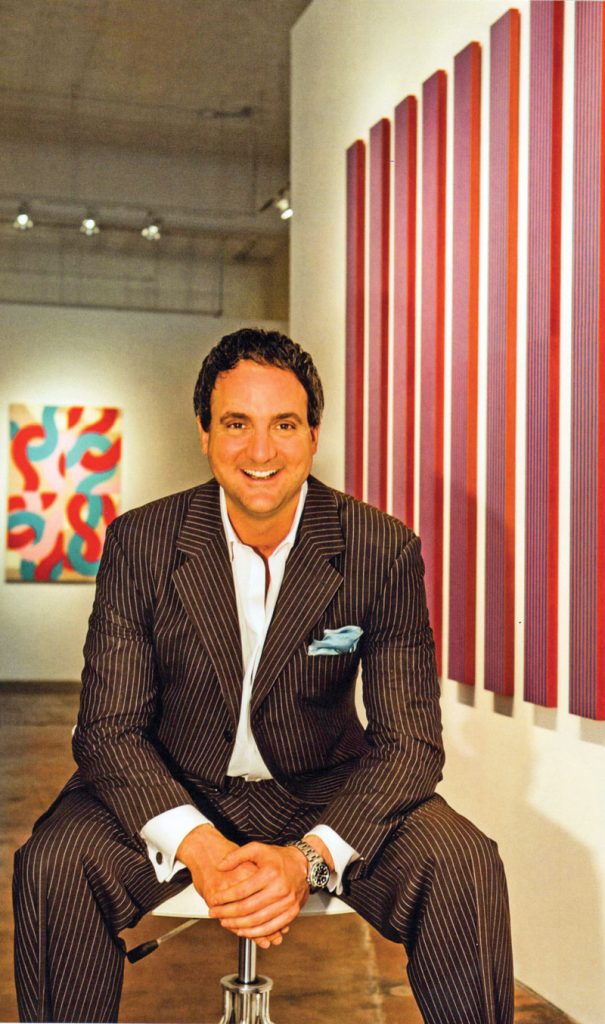
notable neighbors
cwe
Philip Slein’s colorful—literally and figuratively—editorial cartoons started as a way to work out his frustration over the shenanigans of the Trump administration. Plus, it’s been a way for Slein to vent his anger at some of the stupidity, self-dealing and out-and-out cruelty of many of the players. So, when he had to shutter his eponymous gallery in March for the spring lockdown, he threw himself into editorial cartooning with a vengeance. Lately much of his satire, often rendered late at night like most any artist who can’t shut off his mind, features a graphic depiction of the coronavirus: a greyish sphere with pinkish protuberances. A favorite of this writer is a riff on the poster for Jaws. As the president swims furiously, wearing red water wings like a little kid in a motel pool, a huge coronavirus surges up from the deep like the killer shark in the movie. Slein did one last week of Trump partially obscuring his face with a mask—of Kanye West. (We realize, certainly, that some would call his editorial slant controversial. But sometimes the truth hurts.) Anyhow, doesn’t Philip Slein have his fine-art gallery to run? Indeed he does: The gallery, in the CWE at 4735 McPherson Ave., reopened in early June with curtailed hours respectful of the public-health emergency and local government requirements. (Visit philipsleingallery.com for the most updated information.) Its primary focus is on painters who work in a variety of styles and have achieved both regional and international reputations. An artist himself, Slein earned a BFA from Mizzou and an MFA at WashU. And he’s enjoyed satire all along, notably the edgy work of underground cartoonists Frank Stack and R. Crumb. In the late aughts, he concentrated on local subjects by “taking the news and giving it a little poke and a twist.” Some of his audience for cartooning? Family, of course. He laments that he can’t visit his father, 82, who resides in a metro retirement community. But like-minded father and son bond over the cartoons that Slein posts on Instagram. Several have received thousands of reactions, a small percentage of them negative, of course. “If I get a hundred ‘likes,’ I’m over the moon,” he says. Like Herblock, Lukovich, Oliphant et al., Slein makes his message clear at a glance, but a closer look is rewarding. Take “Mount Duncemore” below: From left, we see Trump, Jared Kushner, Mike Pence and Mitch McConnell taking the places on Mount Rushmore, respectively, of presidents Washington, Jefferson, Teddy Roosevelt and Lincoln. Slein produced the cartoon in reaction to the president’s mask-less rally at the national memorial July 3. Banners trailing the airplanes overhead are Slein’s shorthand for the 2016 and 2020 Trump campaigns. He thinks the latter, of course, is going down in flames—as illustrated. For any Trump supporters who resent such editorializing, well … it’s like what the administration has said recently of COVID-19: We’re just going to have to live with it.
